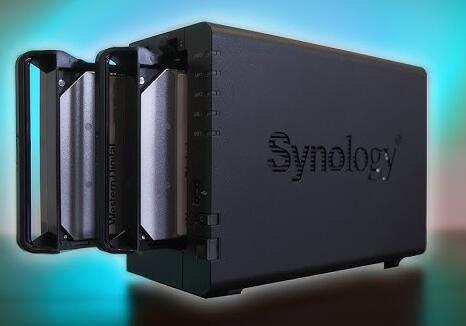Synology NAS (Network Attached Storage) devices have become increasingly popular for both personal and professional use, offering robust solutions for data storage, backup, and recovery. Among the many features of Synology NAS is the concept of a hot spare—a reserve drive designed to step in when an active drive in a RAID (Redundant Array of Independent Disks) configuration fails. But can an external hard drive serve as a hot spare in a Synology system?
What is a Hot Spare? A hot spare is a standby hard drive in a RAID setup that automatically replaces a failed drive without requiring user intervention. This ensures minimal downtime and helps maintain data redundancy. Synology hot spares are supported in specific RAID configurations, such as RAID 5. RAID 6. and RAID 10.

How Hot Spares Work in Synology Systems
A hot spare remains inactive until a drive in the RAID array fails.
When a failure occurs, the hot spare replaces the failed drive and synchronizes data to restore redundancy.
This process is automatic and significantly reduces the risk of data loss during drive replacement.
External Hard Drives in Synology Systems
Understanding External Hard Drives External hard drives are portable storage devices connected to a host system via USB, eSATA, or Thunderbolt. They are commonly used for backups, additional storage, and data transfer.
Synology’s Compatibility with External Drives Synology devices support external drives for purposes such as:
Data backup via Synology’s Backup and Restore applications.
Storing multimedia files accessible through Synology apps.
Sharing files over the network.
Can an External Hard Drive Function as a Hot Spare?
The possibility of using an external hard drive as a Synology hot spare depends on technical and operational factors.
Key Considerations
Connectivity
External drives typically connect via USB or eSATA, which are not part of the internal RAID architecture of Synology systems.
Synology’s hot spare functionality requires the spare drive to be integrated into the RAID system, which is usually limited to internal bays.
RAID Integration
Synology’s DSM (DiskStation Manager) software is designed to manage RAID arrays using internal drives.
External drives are not recognized as part of the RAID configuration and cannot be assigned as hot spares within DSM.
Performance
External drives connected via USB may experience slower data transfer rates compared to internal drives, which could impact RAID synchronization during recovery.
Hot Swapping
Internal drives in Synology NAS devices are designed to be hot-swappable, allowing for easy replacement without shutting down the system.
External drives lack this capability and would require manual intervention to replace.
Alternatives to Using External Drives as Hot Spares
If using an external drive as a hot spare is not feasible, consider these alternatives:
1. Adding an Internal Hot Spare
Install an additional internal drive in the NAS to serve as a hot spare.
Ensure the drive matches the specifications of the existing RAID drives for seamless integration.
2. Cold Spares
Keep an external or internal drive on hand as a cold spare.
In case of drive failure, manually replace the failed drive with the cold spare.
3. Scheduled Backups to External Drives
Use external drives for regular backups rather than as hot spares.
Synology’s Hyper Backup and USB Copy applications simplify the process of backing up and restoring data to and from external drives.
4. Cloud Backup Solutions
Utilize cloud storage as an additional layer of data protection.
Synology’s Cloud Sync allows you to integrate services like Google Drive, Dropbox, and Amazon S3 for remote backups.
Setting Up and Managing Hot Spares in Synology NAS
Step-by-Step Guide to Configuring a Hot Spare
Check Compatibility
Ensure your Synology model supports hot spares.
Verify the RAID type supports hot spares (e.g., RAID 5. 6. or 10).
Install the Spare Drive
Insert an additional drive into an available internal bay.
The drive should be of equal or greater capacity than the existing drives in the RAID array.
Assign the Hot Spare in DSM
Log in to DSM and open the Storage Manager.
Select the RAID group and assign the new drive as a hot spare.
Monitor the System
Use DSM’s notification system to receive alerts about drive status and hot spare activation.
Advantages and Disadvantages of Hot Spares
Advantages
Automatic Recovery: Minimizes downtime and risk of data loss.
Ease of Maintenance: Reduces the need for immediate manual intervention.
Disadvantages
Cost: Requires additional investment in a dedicated spare drive.
Space: Occupies an internal bay that could be used for active storage.
External Drives: Best Practices for Synology Users
If external drives cannot function as hot spares, they remain valuable for:
Backup Solutions
Use external drives for incremental or full backups.
Store critical data offsite for disaster recovery.
Data Archiving
Archive infrequently accessed data to free up NAS storage.
File Sharing
Share files across devices using external drives connected to the NAS.
Temporary Expansion
Use external drives to temporarily expand storage capacity.
While external hard drives cannot serve as Synology hot spares due to technical limitations, they remain an integral part of a comprehensive data management strategy. To maximize data protection and system efficiency, consider using internal drives for hot spares and leveraging external drives for backups, archiving, and temporary storage.
About us and this blog
Panda Assistant is built on the latest data recovery algorithms, ensuring that no file is too damaged, too lost, or too corrupted to be recovered.
Request a free quote
We believe that data recovery shouldn’t be a daunting task. That’s why we’ve designed Panda Assistant to be as easy to use as it is powerful. With a few clicks, you can initiate a scan, preview recoverable files, and restore your data all within a matter of minutes.
Subscribe to our newsletter!
More from our blog
See all postsRecent Posts
- How to recover sd card data after format? 2025-01-17
- How to format an sd card for gopro? 2025-01-17
- How to format an sd card for raspberry pi? 2025-01-17










